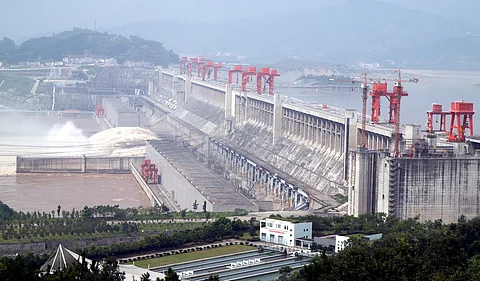

A study published in Nature Water estimated that 23 large ‘dam failures’ could occur worldwide by 2035. With 4.4 per cent of large dams facing a failure probability above 1/10,000, prioritising investment in dam safety was never more important, the research highlighted.
Dams are essential for water management, energy production and flood protection, but their failures have catastrophic consequences. The study, by researchers from Deltares, IHE Delft and Imperial College London, presented a detailed global analysis of dam failure probability from 1900 until present. Historical large-dam failure reports and latest dam inventories were analysed to conduct a statistical, multi-parameter survival analysis.
The researchers observed a strong infant mortality (higher probability of failure during the first years of operation), which remains especially important for the development of new embankment dams, while recent concrete dams have become more resilient. In contrast, hazard signals related to ageing remain less apparent.
Decades-old dams would be prevalent in future failure statistics—especially embankment dams of height between 15 and 70 m built in the second half of the last century, the study found
The study uncovered a trend of increased failure rates of newly constructed dams in low-income regions, which coincides with areas where substantial hydropower potential remains untapped. “This is especially intensified in monsoon-dominated climates, whereas the pattern of construction and failures is more homogeneous across other major climatic regions,” it noted.
The statistical analysis suggests that 23 large dam failures are to be expected worldwide in the near future (2023-2035), with currently 4.4 per cent of large dams having a probability of failure larger than 1/10,000, said the study published March 7, 2025.
“Dam safety is a complex issue that depends on detailed knowledge of each structure’s condition, design, and operational environment. Our future predictions align with 120 years of observed trends, yet it remains key to monitor evolving risk factors—such as deglaciating basins, increasing extreme events, and geopolitical conflicts. Ensuring we accurately quantify these risks is crucial to supporting effective policies for dam safety,” said Antonio Moreno-Rodenas, dam safety expert at Deltares and lead author.
The study highlighted the relevance of investments in monitoring, maintenance and upgrading to adapt to latest hydrological scenarios. This, if ignored, could become a substantial liability and a major vulnerability, especially in the context of increased flooding frequency.
Given the implications that a dam failure can have on society, efforts by the International Commission on Large Dams (ICOLD) and national dam safety authorities since the middle of the past century have led to design guidelines targeting annual probabilities of failure of 1/10,000 for high-hazard dams. However, these efforts are challenged by altered hydrologic forcing and limited resources.
The vast number of dams places a financial burden on administrative bodies tasked with their maintenance. Hence, efforts to identify highest hazard dams can be crucial to optimise dam safety investments within budget constraints and avoid major catastrophes such as the dam failures in the Derna region of Libya (September 2023), which caused several thousand casualties.